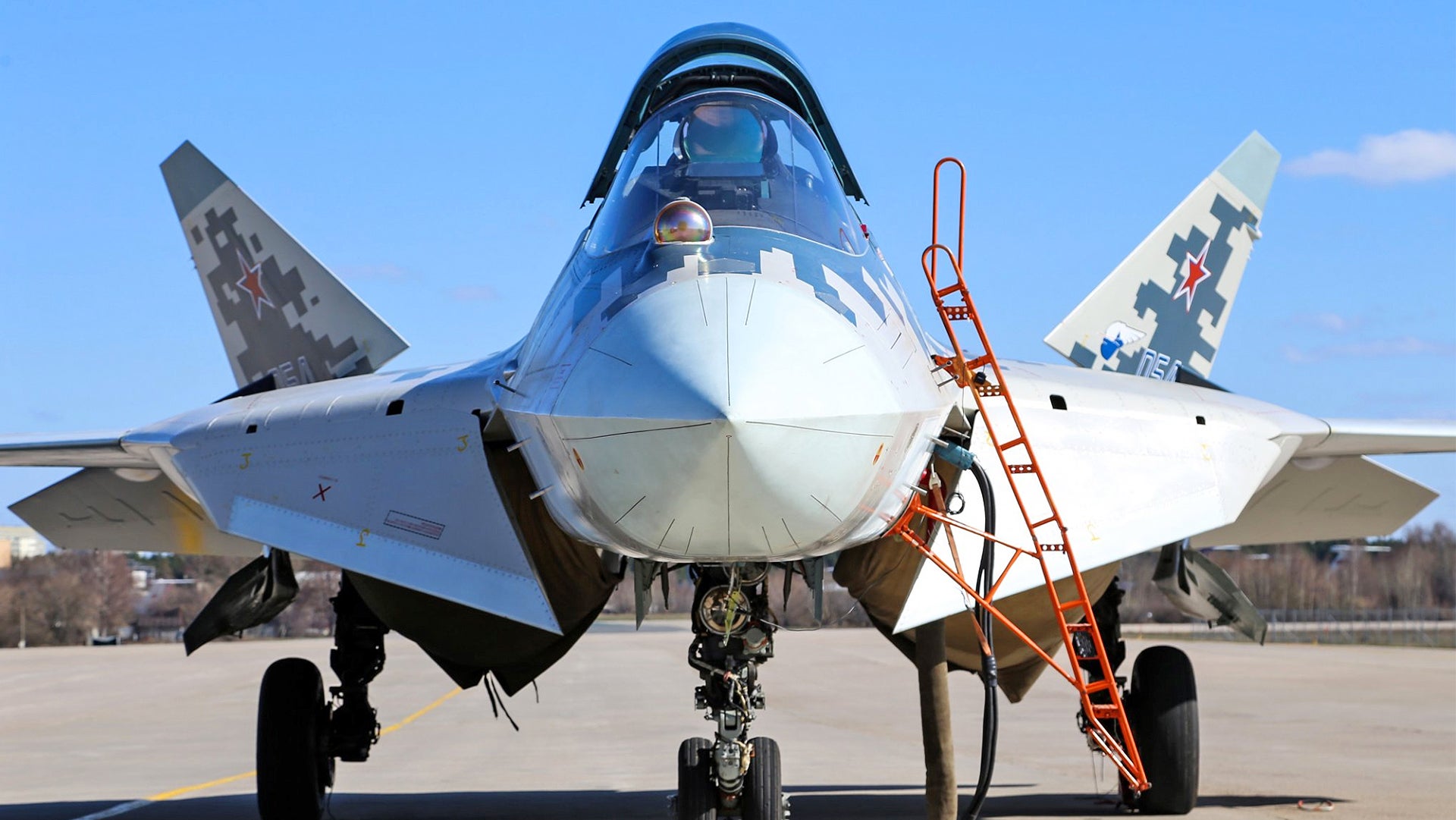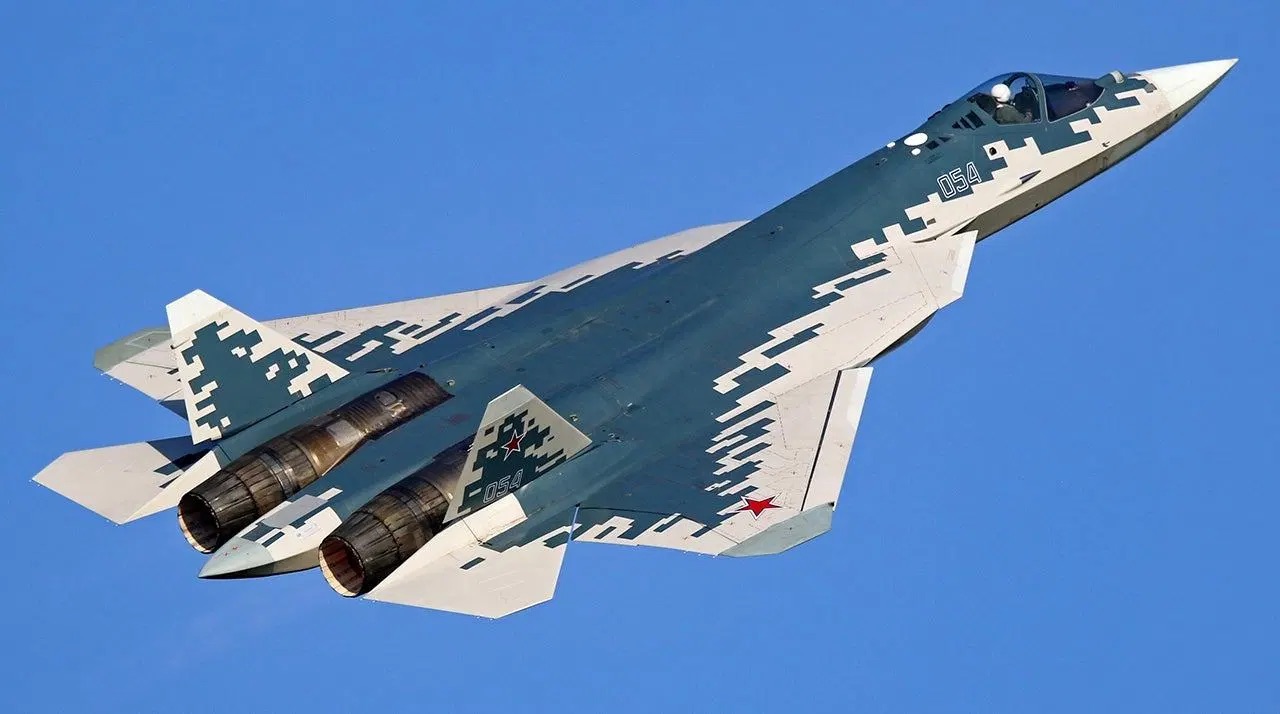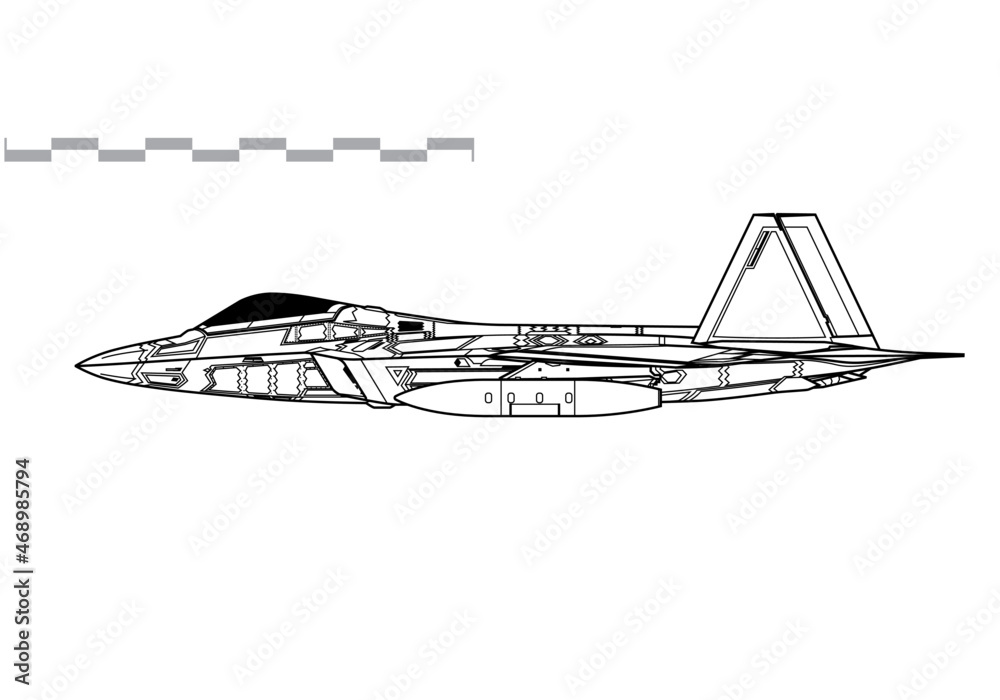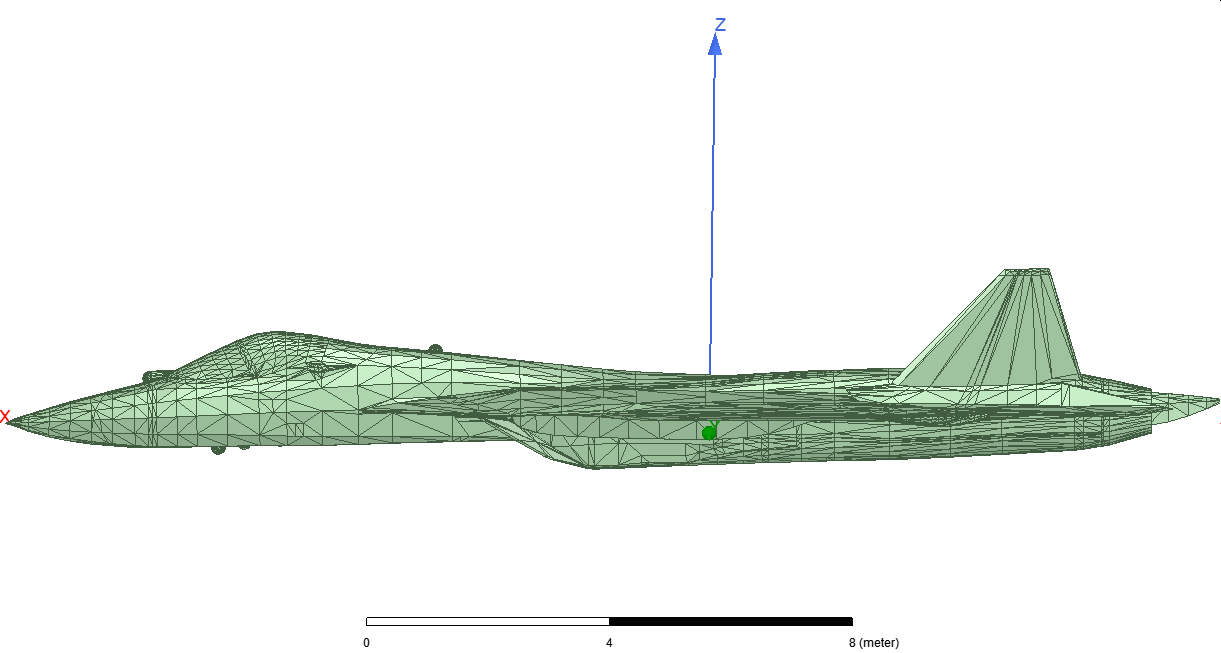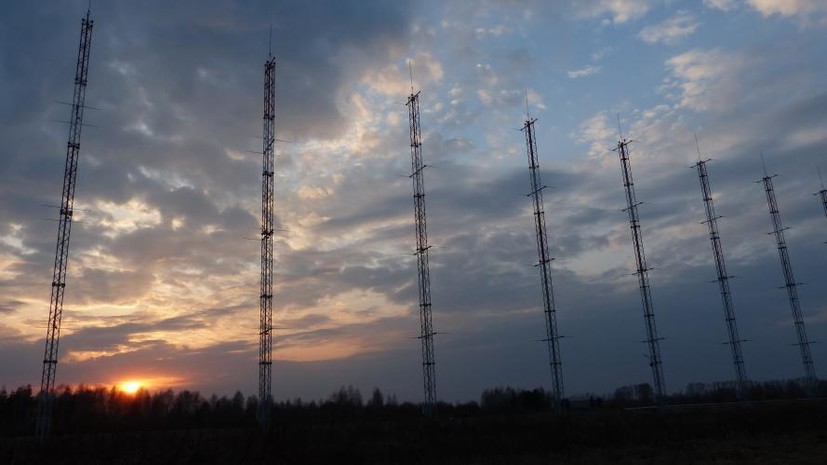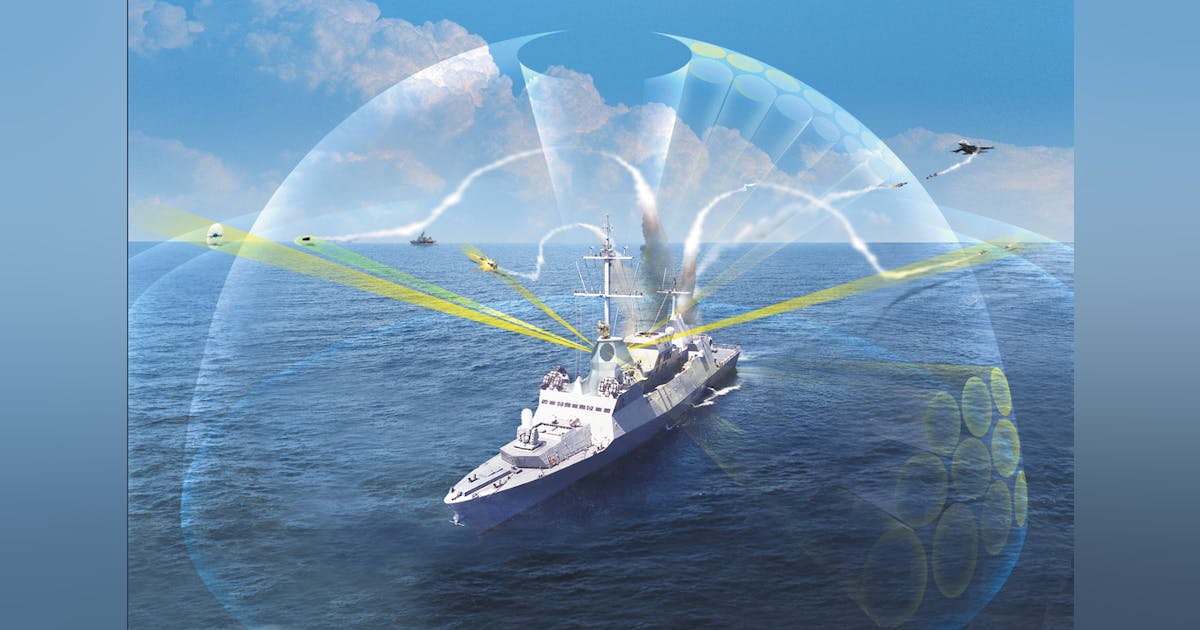If you believe that the RCS is 1m2-0.1m2 than you are going to have to admit what the general designer of the Su-57 said and that is putting the F-22 at 0.3m2-0.4m2. You can't have one thing while disagreeing with the other because if you go to mexico thinking the speed limits are in MPH than kilometers you will have to bribe Mexicans 20 dollars to not give you a ticket. He did have some courtesy putting the Su-57 currently at 0.5m2 but still plans to reduce the RCS with modifications on engines.
I disagree on nothing, in fact I emphasize conformity with both by accepting one manufacturer (Lockheed Martin) stating that its products has 0.0001m2 RCS while also agreeing on another manufacturer (Sukhoi JSC) stating that its products has 0.1-1 m2. Alexander Davydenko is an employee of Sukhoi and Lockheed Martin DOES NOT, I repeat DOES NOT share any technical details to both Sukhoi or Mr.Davydenko.
If I were to believe Mr. Davydenko I would be called a hypocrite because on one side I believed that F-22 RCS is @0.03m2 while Lockheed Martin themselves stated that its @0.0001m2. You can’t have one thing while disagreeing with the other right ?
The two DIRCMs present from what I see in that picture shows that the cockpit of the aircraft already obscures the top one and the bottom one could be obscured if the aircraft descends going face to face with another aircraft. no Indium Tin Oxide, ahhh for fucks sake where are you pulling this shit from lol, Did the russians personally tell you what material they are using for DIRCM or their IRST system? When the bulbs are not on use they turn 180 degrees with RAM facing the direction of the adversary radar. Even than the Su-57 is receiving new sensors during the 2022-2024 phase 2 upgrades and pictures online already existed of using polygon faceted infrared detection systems but based on size and stealth material they see no need. Knowing you, you probably dont know but the Su-75 is using EOTS with saphire glass as well that is shaped like a polygon. But even than the F-35 and F-22 still dont have a present DIRCM and are limited to using flares and chaffs offering less survivability than aircrafts that have flares and chaffs but also extra countermeasures. Also no present IRST systems on the F-35 or F-22 or any present range other than you talking about falcon rockets lol. lets assume the bulb has a 20 centimeter size or 0.2m2 meters there is stealth material that exists to lower sizes 10, 100, 1000, or 10000 times the size and lets assume the IRST bulb when not in use with stealth material present offers an additional 0.0001m2 or .00001m2 and this gives the Su-57 a frontal aspect of .00011 or .0001m2. Heard that the F-22 can spot a .0001m2 target from 40kms away but the IRST system on the eurofighter sees a target from 50kms away and more than likely the OLS-50 can see even further away. Would you still want complete stealth removing those sensors? I have seen the TAI-TFX(my 2nd favorite 5th gen and might be 1st depending on what else I will see later) model have a polygon kind of shape with their IRST system no idea if the Su-57 2nd variant will follow the same path with the new sensors since the Su-75 already has that polygon faceted shape.
View attachment 52973
1. The two DIRCMS are not tinted, and its material are not Indium Tin Oxide. Russia (and you) tries to calm thing down by saying that Su-57 IRST would be retracted back if not needed. But that means the Russians will have to choose between sacrificing stealth once using their IRST. Funny eh? And again don’t forget all are spherical . From all 5th and aspiring 5th gen jet, all uses faceted IRST design while Russia goes spherical, does the laws of physics differ ijn Russia ? Who knows.
That’s one hint why Sukhoi’s own patent puts it a 0.1m2 at best.
As for the Su-75, its clear they have learnt their mistake, especially with the duct design ,engine placement and finally why faceted IRST are better. Not only the IRST but also the canopy. Now Russia claimed that it has added ITO on its canopy, but even then the latest delivered batch to VKS doesn’t show any gold like tint on its canopy unlike th F-22/35. Is it good to believe their claim? I’m not going to answer that.
2. As for you “hinting” that the DIRCM makes the Felon far superior than the F-22/35 with “only” their chaff and flares. Keep this in mind, DIRCM are mainly useful against IR seeker present mostly in short range AAM. The F-22/35 is 1000 times less RCS than the Su-57 which equates to 6 times lesser detection range.
Now we do know in a BVR situation the APG-77v1 and APG-81 are a class of its own, not to mention both has a larger TR module (2000,1679 to Byelka 1550). We also know that Russian radar uses older slotted antenna while the APGs uses notch antenna which means lesser bandwidth for the Byelka. Not only the F-22/35 will detect the 1000 times larger RCS Felon, the Felon will never be close enough to sniff the F-22/35.
The knife is useful if you could make it near your enemy, but it would be tactically hard next to impossible to get close and go for the kill when your foe are armed with a machine gun. The DIRCM present on the Felon will be useful for the Su-57 if the F-22/35 jocks are dumb enough not to use their long range advantage to their use. In long range engagement the AMRAAM (Already un its D variant) most likely outperform the R-77 and its follow on JATM will be even better.
Then there’s the DAS…which would tell pilots if a launch happens near it. The situational awareness of the F-35 compared to the Su-57 (and many other jets) are akin to that of a convertible and a Lamborghini diablo.
The combination of the APG-77v1/81, AAQ-37 DAS, AAQ-40 EOTS and AN/ASQ-239 EW is not something many people will find pleasant. But we’ll talk sensor in another thread.
F-18s use radar blockers but they are not the same patented design, they have straight ducts the Su-57 is curved. And of course since your a loyal follower your following very old information which has changed on the aircraft not really much of a surprise like the rest of your posts at this rate. The air intakes are curved in the Su-57 and not straight.
The engine bay is by far the biggest contributor to Su-57 larger than usual RCS, you could reduce it by using radar blocker, but its clear it will be nowhere near the Y shaped duct on the F-22.35 and J-20 because in those planes the blades are FULLY hidden. That’s as simple as that.
You may claim that the F-18 does not uses the same patented design but the underlying problems stays the same.
A full S-duct was not chosen you get worse drag coefficient, and it kills the aircrafts top speed and acceleration. You are basically flying a brick at that point. In addition, because of all the gymnastics the air flow to the engine has to do with the S-duct, you get worse air flow to the engine, and even less performance. That and the fixed inlets are why certain aircrafts like the F-35 cannot super cruise and cannot reach Mach 2. The Su-57 uses a smoother partial S-duct, with less of a bend, it achieves some reduction of frontal engine profile, without killing performance too much, so it can go over Mach 2, and it can super cruise, even with the first stage engines. The engines also have a radar blocker in the intake to reduce RCS. Finally, it can apply the engine mesh screens to further reduce radar profile of the engine in case you need to, at cost of speed, and the second stage engine will have composite fan blades, and treatments to reduce RCS of the engine in the frontal aspect even without the mesh screens being engaged or without having S-ducts and fan blades are made of composite along with RAM coating. Trust me they have taken a lot of measures to reduce the RCS when they went with this design but we won't know if it offers more stealth or not while achieving high performance.
Your intended excuse is that S-duct will turn the plane into a brick, but people who had seen just how agile and fast the F-22 and F-35 (surprisingly) knows that this is either bullshit or a testament to Lockheed Martin engineering prowess.
If I were to nod to your claim that they reduced the S duct so that it doesn’t turn into a brick, that means Lockheed has solved what Sukhoi has yet to.
You want to know how fast the F-22 ?
A chief test pilot on both the F-117 and the F-22, James “JB” Brown III, provides a fascinating inside look at these remarkable stealth jets.

www.thedrive.com
In regard to paintjobs, you chose a Su-57 without RAM for some reason than a Su-57 with RAM
View attachment 52976
View attachment 52977
Again the Su-57 uses Serrated nozzles and there were sources that stated the ones with the 1st stage engines will put them on their Su-35s while theirs get replaced with the 2nd stated engines. I remember how the Su-57 was criticized for not having flat square nozzles like the F-22.
You missed the point again as usual, its not the serated only prolem, if lets say the Su-57 finally gets it Izdeliye 30 the underlying problem will stay, that is the placement of the engine. In the F-22/35 the engine are hidden behind the tail component. In the Su-57, the nozzle protruded long enough so that the tail could not shield it. See here
This will affect detection not only in the radio spectrum but also IR spectrum. And the US electro optics are world beating. Sometimes I wonder, with that long protruding nozzle and unsealed engine core, what s the chance that 4th gen fighter like the F-15 equipped with IRST21 pod detects and kills it.

 app.blackhole.run
app.blackhole.run

 app.blackhole.run
app.blackhole.run









